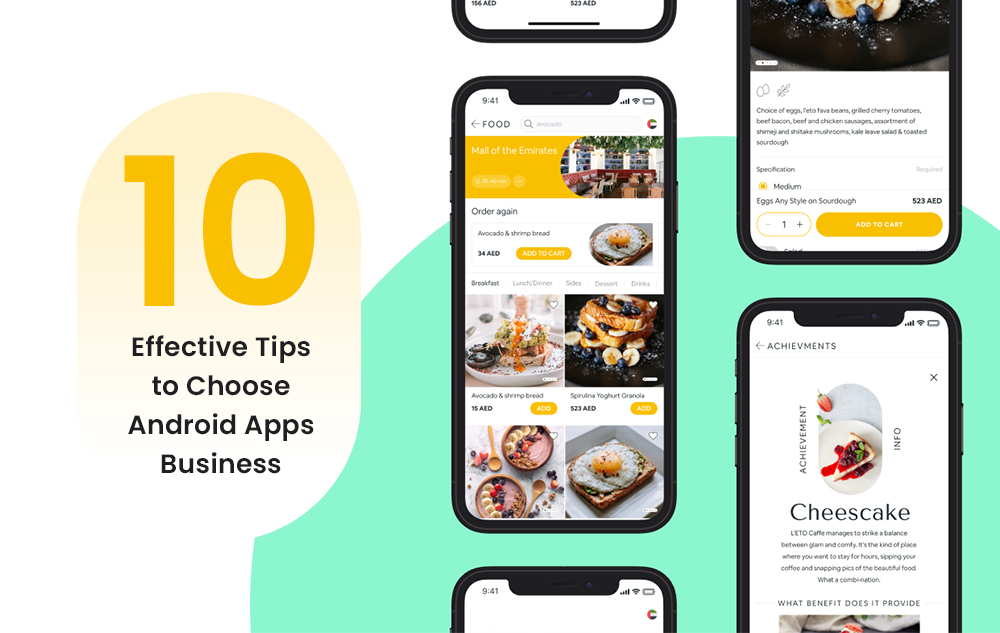Android apps development
10 Effective Tips to Choose the Right Android Apps for Your Business
- Written by
monika - Posted on
November 8, 2024

In today’s competitive digital landscape, businesses need mobile apps to connect with customers, streamline operations, and increase brand visibility. With Android holding a majority share of the global mobile operating system market, choosing the right Android app for your business can be a significant step in achieving growth and success. However, given the overwhelming number of options available, finding an Android app or platform that perfectly aligns with your business needs requires a strategic approach.
Here are ten effective tips to help you choose the best Android app for your business:
Before diving into the app selection process, clarify what your business specifically needs from an Android app. Are you looking for an app to improve customer engagement, boost productivity, streamline operations, or improve communication within your team? Knowing what you want to achieve will help you narrow down options to apps that directly support your objectives.
Understanding your target audience’s preferences and behaviors on mobile can greatly influence your choice. Analyze your customer demographics to determine what features they are most likely to engage with on Android. For instance, if your audience is primarily mobile shoppers, you may want to choose an app with excellent e-commerce capabilities.
Developing and maintaining Android apps requires both time and financial investment. Decide on a budget that covers not only the initial development cost but also long-term updates, maintenance, and potential feature expansions. If an app doesn’t fit into your budget, consider alternative solutions that might offer similar functionalities.
Your app’s usability can make or break the user experience. The design, ease of navigation, and load times are critical for customer satisfaction and engagement. Review each app’s UX/UI design to ensure it provides an intuitive, smooth experience that aligns with your brand.
As your business grows, your app should be able to grow with it. Choose an app or platform that offers scalable options, whether that means handling increased traffic, supporting new users, or offering additional features in the future. Scalability will save you from having to migrate to a new app down the road.
Many businesses already use tools such as CRMs, ERPs, and social media management platforms. To avoid data silos, choose an Android app that easily integrates with the tools your business is already using. This way, you can streamline data flow, improve productivity, and save valuable time.
Security is non-negotiable, especially if your app will handle sensitive customer data, financial information, or company IP. Android apps should comply with relevant data protection regulations, such as GDPR, and should use encryption and other security protocols to protect data.
No matter how well-designed an app is, issues will arise. Opt for an app that offers reliable customer support, ideally with 24/7 availability. This is particularly important for business-critical apps where downtime or bugs can lead to lost sales or productivity.
User reviews and ratings provide valuable insights into the app’s performance, reliability, and ease of use. Platforms like Google Play Store allow users to leave detailed feedback, which can give you an idea of the app’s strengths and weaknesses before making a commitment.
Before fully committing, test the app on different Android devices and versions. Not all apps function smoothly across all Android devices, so ensure compatibility with your employees’ or customers’ devices. This will help you avoid compatibility issues that could lead to poor user experiences.
A simple, intuitive dashboard can make managing the app much easier, especially if the app requires regular content updates or interaction with customers.
Analytics is crucial for tracking performance, user engagement, and other metrics that inform your business decisions. Choose an app with built-in analytics or one that integrates with popular analytics tools.
Technology changes rapidly, and so do customer expectations. Ensure the app provider regularly updates their platform, adding new features and addressing security vulnerabilities to keep your business competitive.
Selecting the right Android app for your business involves more than just choosing a popular option; it requires careful consideration of your business needs, target audience, budget, and compatibility. By following these ten tips, you can find an Android app that not only aligns with your business objectives but also enhances your overall operations and customer experience.
Take your business to new heights by offering unmatched mobility to your customers!


Privacy Policy I Terms & Conditions
© Algosoft Apps Technologies (P) Ltd. (CIN) U93030UP2015PTC075117
Share this article